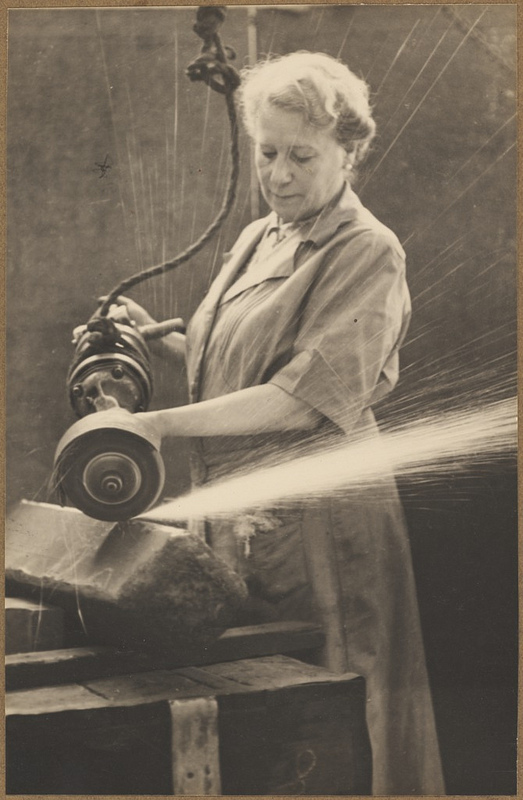Click here for all items related to: Home front
Here there are references which bring out clearly how there is more to war history than the deeds of men in khaki and that this is the case not just in World War I but in wars generally. Michael McKernan describes the macro scene on the home front in World War I and World War II, as do the opening chapters of Gammage and Stanley for World War I. The official war histories also describe the home front as does Beaumont, who juxtaposes events at home in World War I with those in the trenches.

Women volunteer grinding a billet of armour piercing steel at a munitions factory, Australia, 1944. ‘Over a long period a number of women university graduates and students voluntarily performed work for Australia’s Munitions effort.’ (source: Flickr Commons/National Library of Australia pic-an11035265-s203)
Particular aspects of World War I at home are dealt with by Robson (recruitment), Cahill (industrial upheaval), Bollard and Jauncey (conscription) and McKernan again (churches). Bollard ranges more broadly, too, penetrating into the corners of the ‘shadow’ cast by Gallipoli.
The story of Prime Minister Andrew Fisher perhaps personifies how the war disrupted dreams of building a social utopia in Australia (but see also Blainey, Dyrenfurth et al, Hetherington, Lake) while John Curtin‘s battle against conscription contrasts with his role in a later war. Ken Inglis describes how Anzac Day rituals developed in a divided society while Frank Bongiorno and colleagues examine the stance of intellectuals in the face of the Great War. Inglis also notes how schoolchildren in 1939 adjusted to the reality of a new war. Looking at this war, too, Beaumont et al and McKernan examine the (in some respects) similar stories of internees and the families of POWs while Damousi and Lake‘s collection considers the role of women.
Damousi broadens the focus to families during both big wars and Peter Dean‘s collection discloses home front fears and foreboding during World War II. Families dealing with later wars are the focus of the Australian War Memorial’s Afghanistan exhibition and journalist Tim Lester, while Michael Caulfield discloses division on the home front during the Vietnam War in terms which somewhat recall the situation during World War I.

